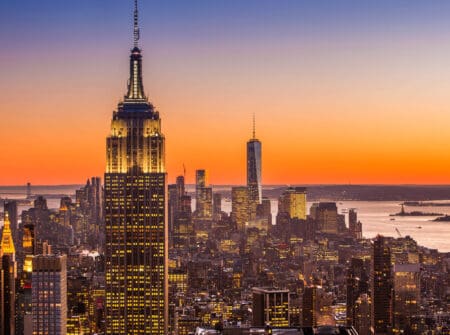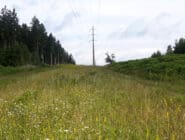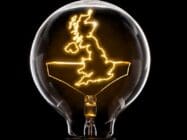
The New York State Department of Environmental Conservation’s “Peaker Rule” has led to fossil fueled generation deactivating faster than new clean energy resources can connect to the grid, putting reliability margins at risk, especially in New York City.
As of May, the so-called Peaker Rule has led to the closure of 950MW of generation in environmental justice areas. Additional closures are expected by 2025. The closures could narrow reliability margins in the nation’s largest city to as little as 50MW. Reliability risks likely would increase during period of prolonged heat waves.
Plus, any delay beyond 2026 to completion of the 1,250MW Champlain Hudson Power Express transmission line, which would bring hydropower from Quebec to New York City, could further impact reliability margins.
And, the combination of natural gas shortages and extreme winter weather could trigger reliability concerns starting as early as 2028 and extending for years to come. By the 2031-2032 timeframe, New York City’s reliability margins could be stuck around 100MW.
Those are key finding from the New York Independent System Operator’s (NYISO’s) annual grid and markets report.
Have you read:
National Grid USA to demonstrate UK flexibility marketplace in New York
Landis+Gyr’s Revelo smart meter gets New York’s green light
“New York’s public policies are increasingly prioritising clean energy production and a rapid transition away from fossil fuels,” said Rich Dewey, president and CEO of the grid operator in an introduction to the report. He said “it is imperative that during this time of rapid change we maintain adequate supply necessary to meet a growing demand for electricity.”
The report said demand growth due to electrification along with the retirement of fossil fuel-based peaker plants is leading to declining reliability margins statewide, but “most acutely” in New York City. To maintain reliability, NYISO said it will likely need to designate peaker plants to remain in service beyond 2025.
The report said that by 2040, in order to achieve the mandates of the Climate Leadership and Community Protection Act (CLCPA), new emission-free generating technologies with the necessary reliability service attributes will be needed to replace the “flexible, dispatchable capabilities” of fossil fuel generation, and sustain production for extended periods of time. The CLCPA covers around 3,300MW of fossil fuel generating capacity, mostly in downstate New York.

But emission-free technologies, either individually or in aggregate, are not yet available on a commercial scale to replace all that capacity, the report said.
The NYISO report said that in response to the CLCPA and other public policies, the number of transmission and supplier projects seeking to interconnect to the grid in New York has more than quadrupled since 2019. It also said that several transmission projects are under construction and expected to be in operation by 2026.
It called these projects “essential” to achieving the state’s climate and energy goals and expanding the delivery of clean energy to consumers. However, additional transmission investments will be necessary to efficiently integrate offshore wind resources and address transmission constraints throughout the state that otherwise limit the ability to deliver renewable energy to consumers.
It noted that NERC’s 2023 Summer Reliability Assessment identifies reduced supply reserve margins in regions neighboring the NYISO in its risk analysis. NYSO said these reduced margins potentially limit the ability to import electricity from neighboring regions, putting greater importance on available supply and transmission within New York.
The report emphasized the importance of the Champlain Hudson Power Express project, which would rely on Canadian-produced hydropower to be available for export to load centers in and around New York City.
But the Associated Press reported that with demand for green energy growing north of the border, too, there are new concerns that Canada’s hydro supply isn’t as bottomless as it once seemed.
It said a study published in May by the Montreal Economic Institute predicted that Quebec, now home to one of the world’s largest hydroelectric systems, will over the next decade fall short of the generating capacity needed to meet increasing demand for power in the province.
Originally published on Power-Grid International.








